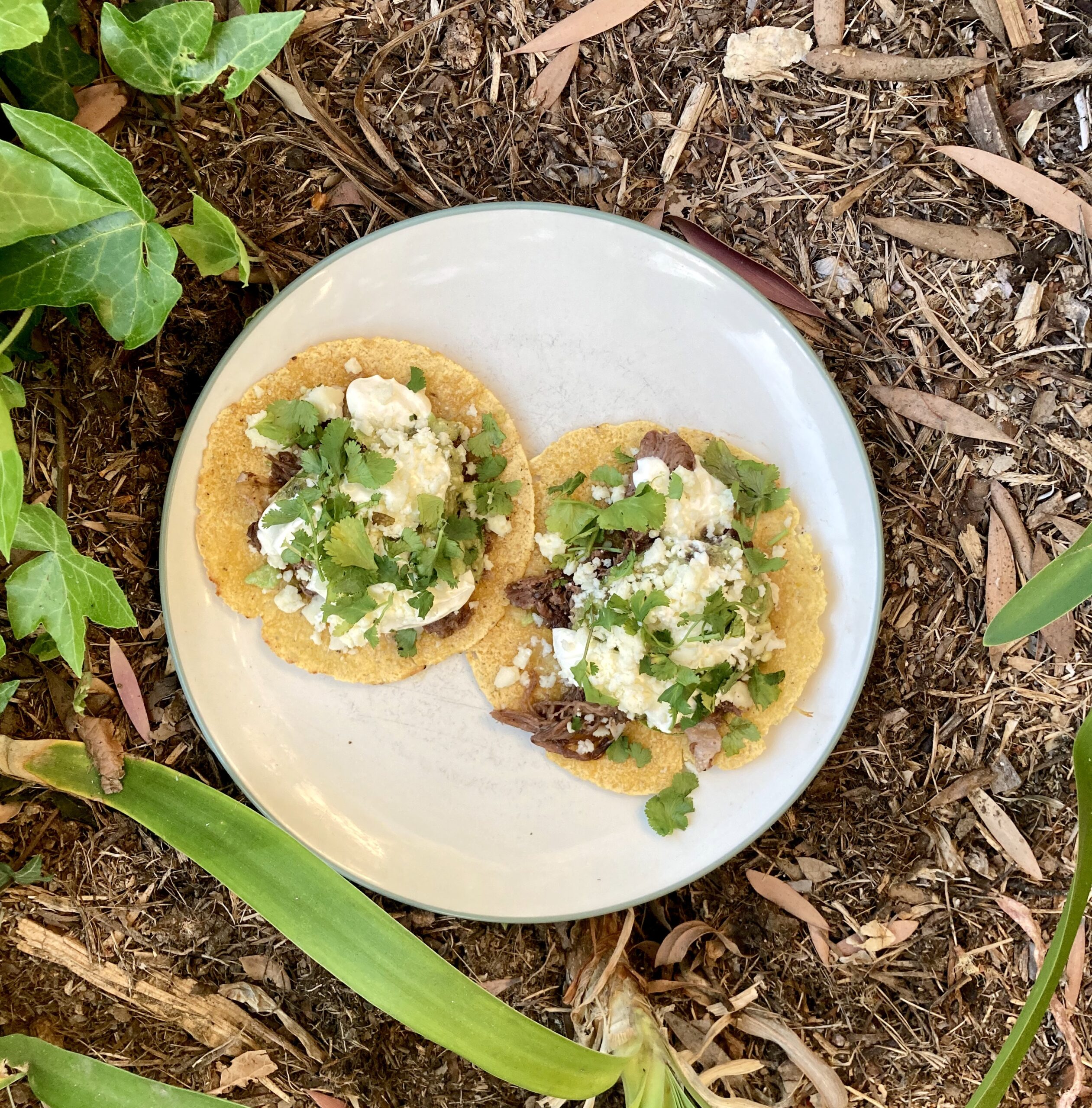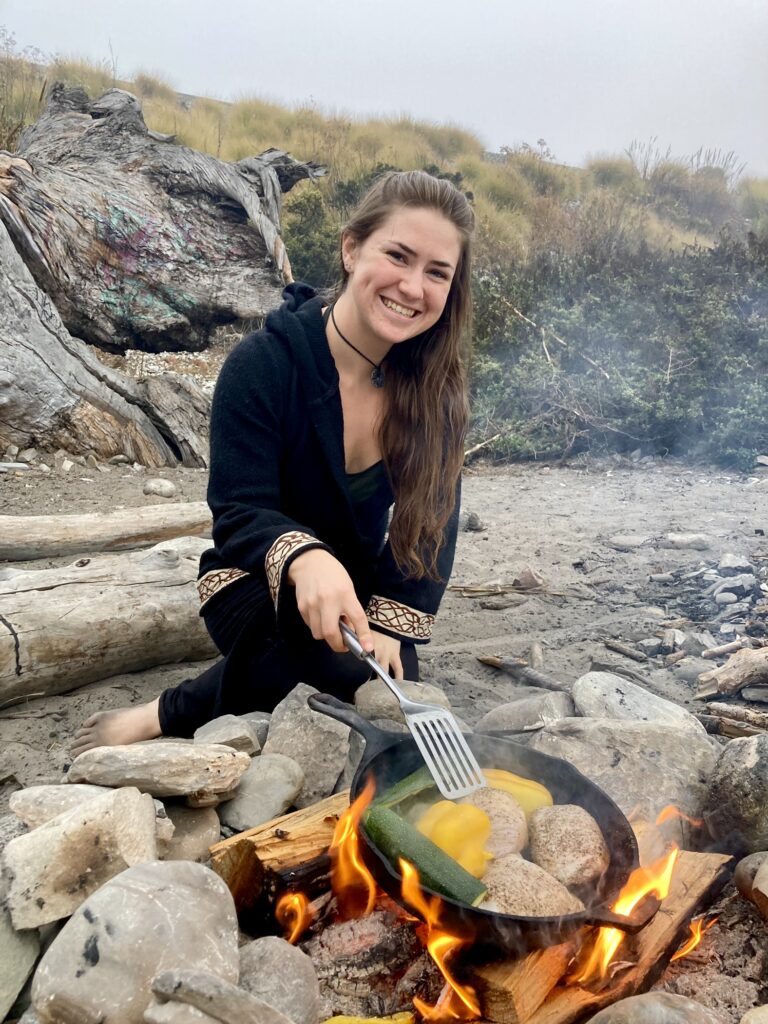Overcome Your Gut + Digestive Issues With Ancestral Nutrition
Beef Tongue Tacos

Beef tongue is an incredibly nutritious cut of meat! Tongue is rich in Vitamins B1, B2, B3, B5, B6, and B12; as well as zinc, copper, choline, selenium, iron, potassium, and phosphorus! Not only is it nutritious, but it’s delicious as well!
Since the tongue is a muscle, it actually taste pretty darn similar to other slow cooked tough cuts of meat like chuck and brisket. Though tongue is a bit softer. If you’re newer to nose to tail eating, tongue is a great place to start since it doesn’t have a strong flavor like organ meats do.

(1)
When I first set out to try tongue, I went with the classic dish of tongue tacos. They turned out so good that I would have them 5 nights in a row and then be sad the next night when I was out of the ingredients for more!
For my tacos I use corn tortillas, slow cooked tongue, avocado tomatillo salsa, sour cream, cotija cheese, and cilantro! A note about picking out good quality corn tortillas: corn is a crop that’s typically genetically modified and then doused with round up (a weed killer known to cause leaky gut, gut damage, and a long list of other health problems).
Therefore it’s important that you pick out organic corn tortillas. And since corn is a grain, it’s also important that it’s prepared properly to reduce the anti-nutrient content. It’s best to get traditionally made tortillas where the corn is first sprouted and then made into tortillas with water, lime juice, and salt.


(These are the tortillas I like to get)
Without further ado, here’s my tongue taco recipe! I hope you and your family enjoy it!
With love from my kitchen to yours,
Kayley

Beef Tongue Tacos
Place 2 lbs beef tongue in a pot, add 1 tsp salt, and add enough water to cover the tongue by about 1/2 an inch. Bring to a covered boil, then reduce heat to the lowest setting. Cook covered on low for 8 hours. Check the water level from time to time and add more if needed, you want the tongue to remain immersed. Then remove the tongue and shred it with 2 forks. You can either remove the tougher white part, or shredded it up along with the rest (which is what I do).
Heat up the corn tortillas. Then transfer to a plate. Top with the tongue. Mash the avocado in a bowl and mix in the tomatillo salsa to make an avocado tomatillo salsa. Then put some on the tongue. Then add sour cream, cotija cheese, and cilantro! Serve and enjoy!
Note, this recipe makes enough tongue for about 10 tacos and I usually have 2 tacos for dinner so it serves 5. Since the tongue takes so long to cook, I like to make a large amount and then have tacos for the next few nights. If you do this too, to reheat the tongue just take out however much you want, put it in a small pot with a little water and heat it up covered over medium heat for a few minutes. After that if there's still any water in the pot, drain the water.
Ingredients
Directions
Place 2 lbs beef tongue in a pot, add 1 tsp salt, and add enough water to cover the tongue by about 1/2 an inch. Bring to a covered boil, then reduce heat to the lowest setting. Cook covered on low for 8 hours. Check the water level from time to time and add more if needed, you want the tongue to remain immersed. Then remove the tongue and shred it with 2 forks. You can either remove the tougher white part, or shredded it up along with the rest (which is what I do).
Heat up the corn tortillas. Then transfer to a plate. Top with the tongue. Mash the avocado in a bowl and mix in the tomatillo salsa to make an avocado tomatillo salsa. Then put some on the tongue. Then add sour cream, cotija cheese, and cilantro! Serve and enjoy!
Note, this recipe makes enough tongue for about 10 tacos and I usually have 2 tacos for dinner so it serves 5. Since the tongue takes so long to cook, I like to make a large amount and then have tacos for the next few nights. If you do this too, to reheat the tongue just take out however much you want, put it in a small pot with a little water and heat it up covered over medium heat for a few minutes. After that if there's still any water in the pot, drain the water.
Notes
Nutrition
| Ingredients | Calories | Fat | Carbs | Protein |
| 2 lbs beef tongue raw | 2,024 | 145.6g | 0g | 134.4g |
| 10 corn tortillas | 600 | 7.5g | 130g | 10g |
| 1.25 cups tomatillo salsa | 100 | 0g | 20g | 0g |
| 1.5 avocados (200g) | 340 | 31.5g | 17.7g | 4.1g |
| 1.5 cups sour cream | 666 | 68.1g | 12g | 7.2g |
| 0.5 cup cotija cheese | 225 | 17.5g | 0g | 15g |
| total (makes 10 tacos) | 3,955 | 270.2g | 179.7g | 170.7g |
| 1 serving (2 tacos) | 791 | 54g | 35.9g | 34.1g |
(1)
Notes:
- Nutrition is based on the products I use. I provide a nutrition table so that you can quickly check to see if your food products match or so that you can easily calculate the nutrition for any changes you want to make to the recipe. I think this helps if you have very specific diet goals and/or fitness and/or health goals. I also wanted you to be able to see exactly where I get the numbers for my nutrition facts so that you can see that they are reliable and learn more about macro breakdowns of food.
Works Cited
1. Nutrition Data Self. Accessed 30 April 2022. https://nutritiondata.self.com/

